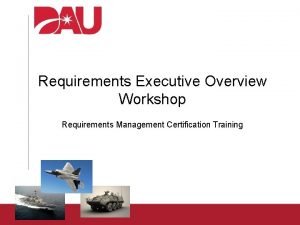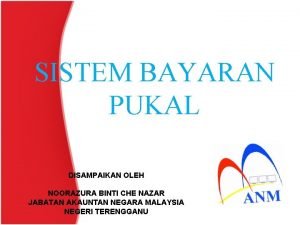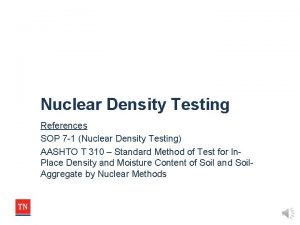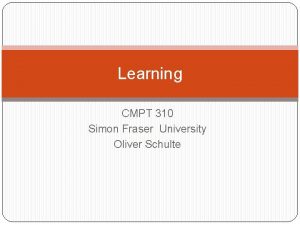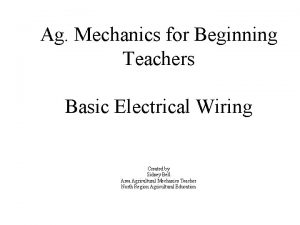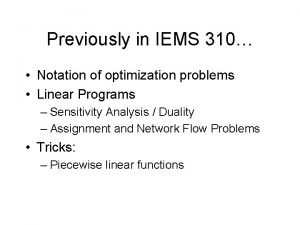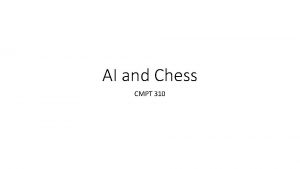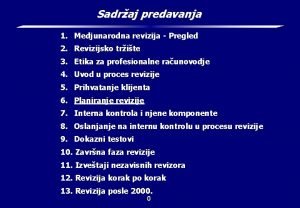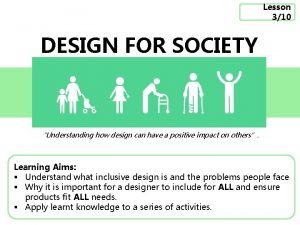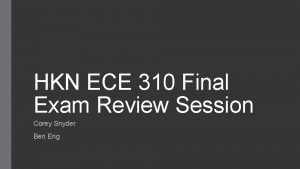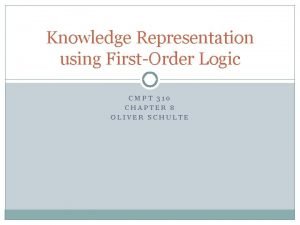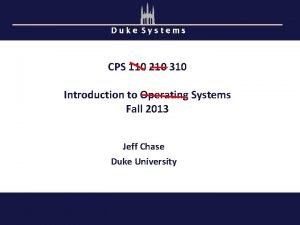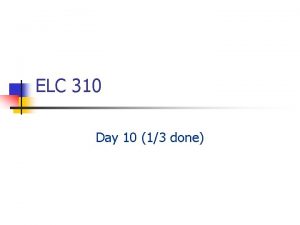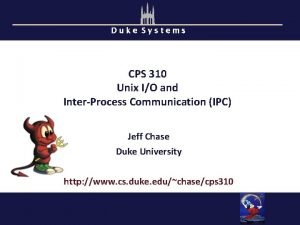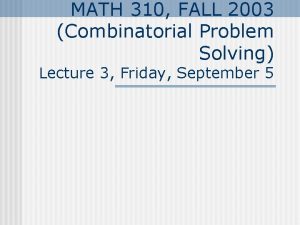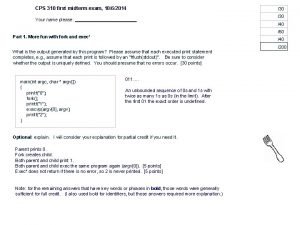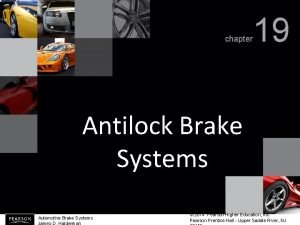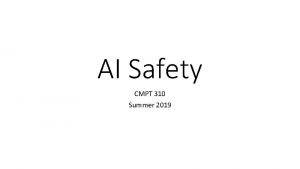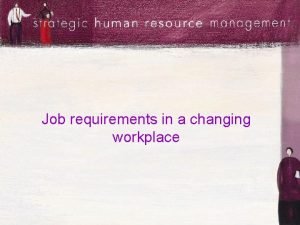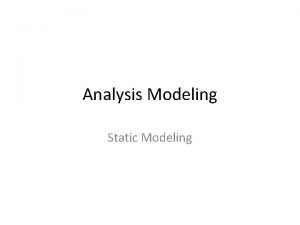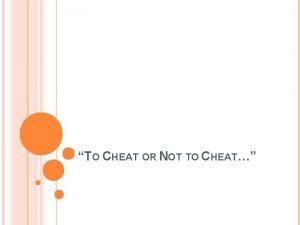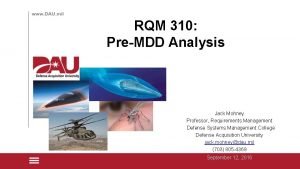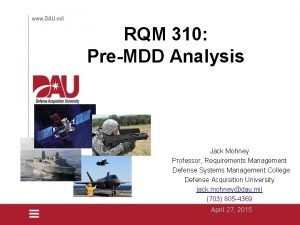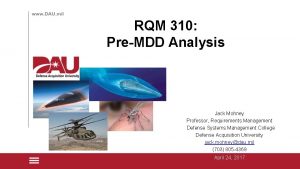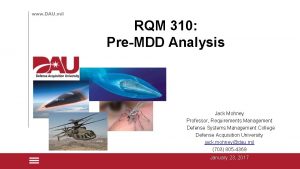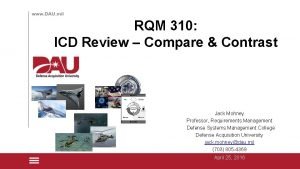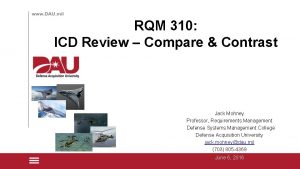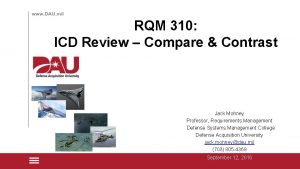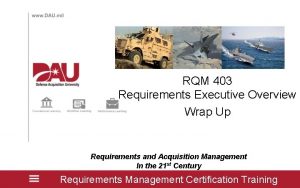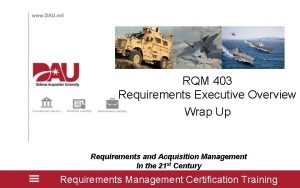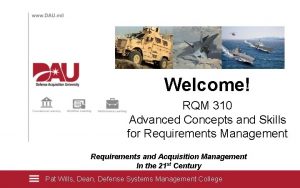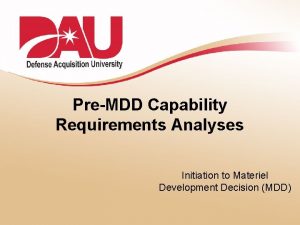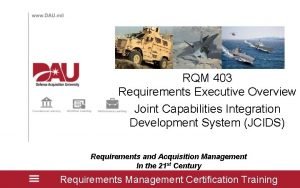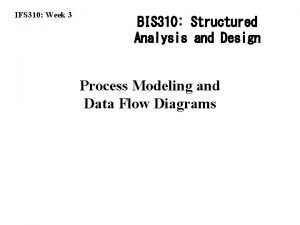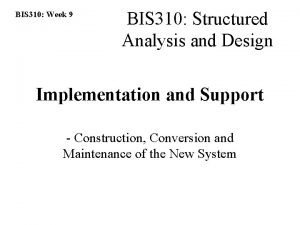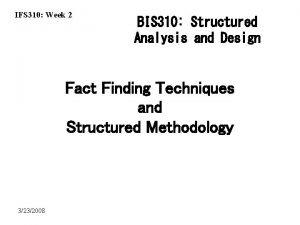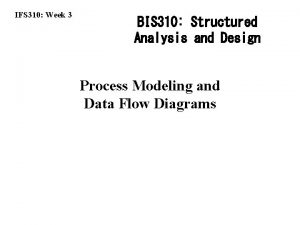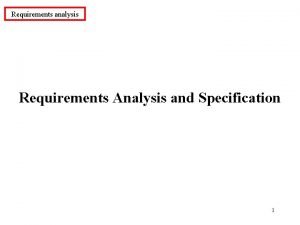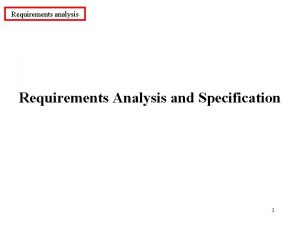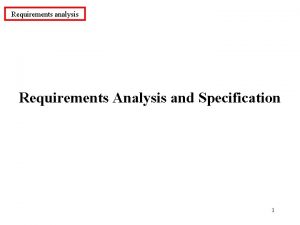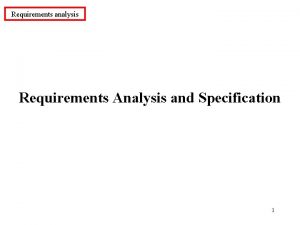RQM 310 PreMDD Analysis Jack Mohney Professor Requirements














































- Slides: 46

RQM 310: Pre-MDD Analysis Jack Mohney Professor, Requirements Management Defense Systems Management College Defense Acquisition University jack. mohney@dau. mil (703) 805 -4369 October 19, 2015

Lesson Objectives • Examine analytical approaches that identify military capabilities, capability gaps, recommend non-materiel & materiel approaches, & recommend action – Examine military capability analytical approaches – Summarize the essential characteristics & qualities of Capability Based Assessments (CBAs) – Explore the relationship these approaches have to the DOTm. LPF-P Change Recommendation (DCR) & Initial Capabilities Document (ICD) 2

The Environment (Why Capability Analysis Matters…) 3

Our National Challenge • The United States must: – – Prevail in current conflicts – and also: Deter potential adversaries – yet continue to: Prepare for future conflict – and: Cooperate with allies and partners • U. S. Armed Forces must: – Address a wide range of challenges yet: – Recognize not all challenges have equal priority • The Do. D Must: – Make difficult tradeoffs to manage risk in – Short-, Mid-, and Long-Term time frames but: – Identify areas of possible divestment 4

Our Military Challenge CCMD Missions & Responsibilities Service Vision & Investment (Today) (Tomorrow) Joint Systems Service Missions Changing Demands & Proactive Action Shrinking Budgets & Unstable Funding Geographic Specificity Worldwide Applicability Ambitious Mission Sets & Evolving Enemies Achievable Acquisitions & Long. Lasting Systems High Quantity High Quality (Sufficiency) (Capability) CCMD: Combatant Command 5

Our Decision Support Challenge Big “A” Acquisition Resourcing (PPBE) Requirements (JCIDS) • Poor capability & gap analysis • Poorly-written JCIDS documents (ICD, CDD, CPD, DCR) • Top-down materiel solutions • Single point failures: critical dependence on programs with acquisition problems • Unstable funding • Insufficient resourcing & trade space • Poorly-phased budget unable to support materiel development Defense Acquisition System (DAS) • Immature technologies • Incomplete systems engineering • Little requirements traceability and rushed decomposition • Little-to-no schedule trade space • Reactive testing – not enough time and assets • Non-existent inter- and intra-departmental stakeholder coordination and support Synchronize JCIDS, DAS, and PPBE to deliver capabilities to Warfighters CDD: Capability Development Document CPD: Capability Production Document DCR: DOTm. LPF-P Change Recommendation ICD: Initial Capabilities Document JROC: Joint Requirements Oversight Council 6

Our Sourcing Challenge Top-Tier U. S. Defense Industrial Consolidation, 1993 -2007 Source: Globalsecurity. org, accessed Jan 22, 2014 7

Our Requirements Challenge • Gaming the system: – Specifying the solution too early – Misusing the Urgent/Emergent processes • Miscommunicating real warfighter needs: – Untrained workforces conducting inadequate capability analyses – Faulty translation, documentation, and traceability of capabilities & gaps into usable, observable, & testable requirements – “Good” leadership briefings that mask “Bad” JCIDS documents • Hindering acquisition programs: – – Cost & schedule estimates derived from those very JCIDS documents Confusing a “requirement” with a “specification” Requirements creep - operational & technical No follow-up on DAS reviews and T&E results 8

The Consequence Fix ing How the Warfighter explained it… How it was documented… How the PM understood it… How the Contractor designed it… How it was delivered… How Do. D was funded & billed… the de lta. Programmer is w How the Tester How the received it… wrote hyit… betw we een ’re he thes re… e t hre e How the Loggie supported it… What the Marketing Guru advertised… How the Consultant explained it… Finally: What the Warfighter actually needed… http: //www. businessinnovationinsider. com/2006/02/what_the_customer_really_neede. php Accessed Sep 14, 2013 9

Why Care About Up-Front Capability Analyses? Life Cycle Cost (LCC) Determination* % Impact of Materiel Decision on LCC Are we buying the “proper” system? (Capability Developer: Mission Effectiveness) Are we buying, modifying, & disposing of that system “properly”? (Materiel Developer: Acquisition Efficiency 100% Approximately 95% of LCC determined here 80 60 % Actual Funds Spent 40 20 MDD Approximately 10% of LCC Spent here 0% A MSA TMRR Control LCC Here: “Sweet Spot” B EMD C Approximately 5% of reduction left here P&D O&S Disposal LCC Reduction Opportunities *Notional curves: - Solid: averaged DAU, AFMC, & AMR Research Inc. data - Dashed: extrapolated “S” curve (sigmoid function) 10

The Process (Pre-MDD Capability Identification…) 11

Pre-MDD Analyses ICD Strategic Joint Guidance Concepts MDD Capabilities - Based Assessment President Joint SECDEF Community CJCS Draft CDD Materiel Solution Analysis A IOC CD D RF Va P lid Re ati le on as e C Ap om pr po ov ne ed nt Ao. A review and Portfolio Assessment CDD B CPD Engineering & Manufacturing Development Technology Maturation & Risk Reduction Ao. A Report Ao. A: Analysis of Alternatives CDD: Capability Development Document CPD: Capability Production Document C Production & Deployment Operations & Support Sustainment PDR & PDR Assessment Disposal CDR & CDR Assessment ICD: Initial Capabilities Document MDD: Materiel Development Decision 12

Solving Military Capability Gaps • Basically, three paths: – 1. GFM: for assets available in Joint Force – basically adjusting what we currently (or are programmed) to have - to where we need it… OR – 2. DCR: When Do. D needs an organic Joint Force non-materiel approach – 3. ICD: when Do. D needs both a materiel & non-materiel approach • Regardless of the path, solid analysis increases the odds… DCR: DOTm. LPF-P Change Recommendation GFM: Global Force Management ICD: Initial Capabilities Document 13

Do. D Analytical Approaches to Identify Capabilities • CJCSI 3150. 25, Joint Lessons Learned Program – Reflects assessment of operational utility – May lead to further analyses (CBA trigger? ) & development of JCIDS documents for staffing – http: //www. dtic. mil/cjcs_directives/cdata/u nlimit/3150_25. pdf • Joint IED Defeat Transition Package – Source document for the CDD & CPD - JROC approval & transition to program of record (POR) POR (IED robot with Tanglefoot) • JCTD – Joint Capability Technology Demonstration – After an assessment of operational utility – Outlined in Emerging Capability and Prototyping (EC&P) website: – http: //www. acq. osd. mil/ecp/ (FITE) • Prototypes – After an assessment of operational utility – Used to address JUONs & JEONs – also outlined in the EC&P website above: (JLTV) 14

Do. D Capability Analysis Outputs • Regardless of the approach, these analyses ought to: • • Describe the mission & military problem Assess prior studies ID the tasks needed to meet mission objectives ID the capabilities using one or more JCAs - describe the tasks, conditions, standards • Assess the capability gaps – needed vs programmed force structure • Assess the operational risk for each capability gap if not addressed • First, exhaust all possible non-materiel approaches that could satisfy part of all of the capability gaps • Second, examine materiel approaches • Third, recommend the most appropriate approach to close the capability gaps and reduce operational risk Fundamental goal: recommend action or accept risk JCA: Joint Capability Area 15

The Do. D CBA • The Capabilities-Based Assessment (CBA) is the “typical” JCIDS method to identify capabilities, gaps, & possible solution approaches: – Recapitalization, Replacement, & IS: CBA takes No Longer Than 90 days (NOT including writing & staffing times…) – More complex or new mission area: CBA takes No Longer Than 180 days (again, no writing & staffing times…) – No extensive detail or pre-determined solution CBA: Capabilities-Base Assessment IS: Information Systems 16

CBA Steps - May 2015 JCIDS Manual Step 1 Step 2 Step 3 Step 4 Step 5 Submit Study Initiation Notice Derive CBA Focus Determine Operational Context Identify Capability Requirements & Capability Gaps Assess Operational Risk Strategic Context, Missions, Scenarios, Joint Lessons Learned, DODAF Views Timeframe, Threats, Concepts, & CONOPS, DODAF OV-5 a Do. DAF OV-3, CV-2, CV-3, CV-6, & OV-5 a, SSA Products Previous Studies, Lessons Learned, & other Analytical Products Step 6 Step 7 Step 8 Identify Non. Materiel Approaches Assess Materiel Approaches Submit Documentation & Recommendations Wholly or Partially Mitigate Gaps Evolutionary Replacement/Recap Transformational Needs Analysis Gap Analysis Solutions Analysis 17

CBA to Ao. A & RM Skill Sets ID tasks, conditions, & standards “What’s the military problem” ID capability gaps & redundancies “Analyze the programmed force structure & doctrinal approaches” ID possible nonmateriel & materiel solutions “Address gaps or accept risk” DCR ICD JCIDS Conduct of a Do. D CBA RM Skill Set = Capability Analysis Seam Between Capabilities & Acquisition MDD CBA/ICD Sets up the Ao. A… Ao. A Acq RM Skill Set = Requirements Development 18

CBA Lit Search: Strategic Guidance QDR CRA NSS Previous Work (AIR, J 8 Repository) NSHS NDS NMS UCP JSCP DPG GEF AIR: Acquisition Information Repository CRA: Chairman’s Risk Assessment QDR: Quadrennial Defense Review NSS: National Security Strategy NDS: National Defense Strategy NMS: National Military Strategy ID tasks, conditions, & standards “What’s the military problem” ID capability gaps & redundancies “Analyze the programmed force structure & doctrinal approaches” NSHS: National Strategy for Homeland Security UCP: Unified Command Plan GEF: Guidance on Employment of the Force DPG: Defense Planning Guidance JSCP: Joint Strategic Capabilities Plan 19

CBA Lit Search: Conceptual Guidance Legacy Docs: JOAC, CJCSI JOE, 3010. 02 C JOC, JIC, JCD&E* Etc… Joint Concepts J 7 - JCCD JCA ID tasks, conditions, & standards “What’s the military problem” ID capability gaps & redundancies “Analyze the programmed force structure & doctrinal approaches” • J 8 Joint Capability Areas Wiki (login requires CAC): https: //intellipedia. intelink. gov/wiki/Joint_Capability_Areas • (enter “JCA” in search box in upper right corner…) JCCD: Joint Capabilities to Concept Division JCD&E: Joint Concept Development & Experimentation CCJO: Capstone Concept for Joint Operations JIC: Joint Integrating Concept JCA: Joint Capability Area JOC: Joint Operating Concept JOAC: Joint Operational Access Concept JOE: Joint Operating Environment 20

Requirements Decision Chain JROC DECISION CHAIN JROC Chairman; Advises the CJCS VCJCS JROC Owns JCIDS; Validates JROC Interest documents; final authority JCB Validates JCB Interest documents; assists JROC FCB Reviews documents; prioritizes within portfolio; makes validation recommendation to JCB/JROC FCB WG Reviews documents & prioritizes prior to FCB review JROC MEMBERSHIP Chair: VCJCS Statutory Members: • Vice Chief of Staff, Army • Vice Chief of Naval Operations • Vice Chief of Staff, Air Force • Assistant Commandant of the Marine Corps • Combatant Commands* (Commander or Deputy Commander) • More Tank-like, limit the audience, help promote determinative discussions & decisions… • JROC Principals+1; CCMD Principals+1 • Statutory Advisors: USD - AT&L, Policy, & Comptroller; DCAPE; DOT&E • JS J 7; FCB Chair; & minimal others (invitation only…) JROC: Joint Requirements Oversight Council JCB: Joint Capabilities Board FCB: Functional Capabilities Board FCB WG: FCB Working Group 21

Functional Capability Boards* C 4/Cyber Includes NC and C 2 JCAs BGen Weatherington JS J-6 Logistics* Mr. Canfield JS J-2 Mr. Hawkins JS J-4 MGen Clardy JS J-8 Protection** Force Application Additional JCA: BGen Bobeck JS J-8 FCB Membership: (O-6 level) Services CCMD Reps OSD (AT&L) OSD (I) USec. AF (Space) Do. D CIO Force Support Battlespace Awareness D/CAPE DIA Rep (Threat) ODNI/IRB OSD (Comptroller) Other Do. D agencies as necessary MGen Clardy JS J-8 • Corporate Management & Support *Ms Reardon, DASD for Supply Chain Integration, serves as Log FCB Co. Chair **RDML Wilson, J 8/DDJIAMDO, serves as Protection FCB Co-Chair for IAMD issues • As of 14 Oct 2015 22

JCIDS Document Staffing (Joint Staff Only – NOT Service…) Functional Capability Board • SME inputs from Do. D • Prioritization within this portfolio • CCMD Inputs • Allied/Partner Nation equity • Non-materiel Sponsor Gatekeeper recommendations Acquisition (and/or DCRs) FCB Chair: Ready Validation Discussion? JCB JROC Combined “Staffing” 4 days Est. 21 days Commenting/30 days Adjudication/7 days to FCB Chair Termination Est. 7 days to JCB/14 days to JROC Total: 97 days Theoretical ICD max (CBA start to JROC validation): 277 days 23

JCIDS Document Tracking JROC Interest ACAT I/IA programs & Joint DCRs JCB Interest ACAT II & below - impact on interoperability Joint Integration ACAT II & below - require endorsements & certs Joint Information ACAT II & below - do not require endorsements & certs FCB KM/DS staffing & comment JCB JROC* FCB KM/DS staffing & comment JCB FCB KM/DS staffing & comment FCB Sponsor KM/DS staffing & comment * JROC may assert itself as the validation authority for any document of any assigned JSD at ANY time by directing JS J 8 Gatekeeper to set the JSD to “JROC Interest” Joint Staffing Designator (JSD) Staffing & Prioritizing Body Validation Authority KM/DS: Knowledge Management/Decision Support tool 24

1 st CBA Recommendation: Non-Materiel Approaches Doctrine: change how we fight Organization: change how we’re organized to fight Training: change how we train our Do. D personnel materiel: acquire what we already have in the field – GOTS – NOT COTS or NDI Leadership: adjust the joint leader’s professional development Personnel: add or reassign people Facilities: move or realign buildings & infrastructure Policy: change policy that impacts how we fight 25

2 nd CBA Recommendation: Materiel Approaches • Development & Fielding of Information Systems – Or similar technologies with high obsolescence rates – Evolution of existing capabilities • Evolution of Existing Systems – Provide significant capability improvement – Replacing existing system with more capable system – could be NEW COTS, GOTS, or NDI – Simple recapitalization • Transformational Systems – Differ significantly in form, function, operation & capabilities – Significant improvement over current capability – Transforms how we accomplish mission 26

2 nd CBA Recommendation: Materiel Approaches 27

Bottom Line: Pre-MDD Capability Analyses These same results then support which acquisition analysis/document? Usually starts & supports which acquisition phase? Supports which acquisition decision? Support which documents? Ao. A Materiel Solution Analysis (MSA) Phase Sound Analysis & Recommendations: vital for shaping the force & the foundation of a successful acquisition Materiel Development Decision (MDD) DOTm. LPF-P Change Recommendation (DCR - First) or Initial Capabilities Document (ICD - Second) CBA Analysis & Recommendations 28

Sources for More Information • • • JCIDS Intellipedia website (requires CAC login): – https: //www. intelink. gov/wiki/JCIDS Joint Capability Areas (JCAs – requires CAC login): – https: //intellipedia. intelink. gov/wiki/Joint_Capability_Areas Defense Acquisition Mgmt Info Retrieval (DAMIR, requires CAC login): – https: //ebiz. acq. osd. mil/DAMIR/Portal. Main/Damir. Portal. aspx Acquisition Info Repository (AIR, requires CAC login): – https: //www. dodtechipedia. mil/AIR DASD/EC&P (Emerging Capability & Prototyping): – http: //www. acq. osd. mil/ecp/ DAU online course CLR 250, Capability-Based Assessments (CBAs): – http: //icatalog. dau. mil/onlinecatalog/courses. aspx? crs_id=1718 DAU Requirements Management Community of Practice (RMCo. P): – https: //acc. dau. mil/Community. Browser. aspx? id=204035 DISA Joint Capability Technology Demonstration (JCTD) Process Briefing: – http: //www. disa. mil/Mission-Support/Enterprise. Engineering/~/media/Files/DISA/Services/JCTD_Process_Fundamentals. pdf Do. D Issuances (Directive-Type Memorandum) website: – http: //www. dtic. mil/whs/directives/corres/dir 3. html 29

What does the JROC expect from Pre-MDD analyses? A. Analytical depth B. Specific recommendations C. Analytical breadth D. Action timetables 0 of 23

What’s the maximum time a CBA should take? A. B. C. D. 30 days 90 days 180 days 277 days 0 of 23

What recommendations can be submitted with a DCR? A. Increasing manpower, operational tempo, spare parts, & fuel supplies B. Recommend changing PME subjects or emphasis C. Buying updates of commercial hardware in the inventory D. All of these choices are correct 0 of 23

Which of the following is not an ICD predecessor document or input? A. B. C. D. Joint Concepts Validated Threat Documents Ao. A Study Report JCTD Operational Utility Assessment E. All of these choices are correct 0 of 23

Which choice best represents the role of the CBA? A. It maintains focus on developing specific solutions after sponsor initiation B. It indirectly supports the ICD staffing process C. It is analysis that underpins JCIDs D. It directly supports the CDD staffing process E. All answers are correct 0 of 23

CBAs identify all but which of the following: A. Possible non-materiel approaches B. Operational risks C. Materiel support approaches D. Shortfalls in existing systems E. All answers are correct 0 of 23

Back Up 36

GFM: Title 10 U. S. C. : Force Deployment Authorities* • Assignment: – The President, through the UCP documents his direction for assigning forces for Unified Commands (Title 10 U. S. C. , Sections 161, 162, and 167) • Allocation: – By the authority of the Sec. Def, forces assigned to a combatant command may be transferred or allocated to another combatant commander for employment…under procedures prescribed by the Sec. Def and approved by the President (Title 10 U. S. C. , Section 162) • Apportionment: – The CJCS is responsible for preparing strategic plans including projected resource levels…the CJCS apportions forces to combatant commands based on the Sec. Def’s contingency planning guidance (Title 10 U. S. C. , Section 153) The “Three A’s” of Global Force Management *Source: EUCOM GFM Briefing, 3 Mar 2012 37

Changes to the Process (23 February 2015…) 38

2015 Changes (1 of 2) • Consolidated Guidance: – Cancel: CJCSI 3312. 01 (Intelligence Certification), CJCSI 6212. 01 (Net-Ready KPP), and JWSTAP Charter (Weapon Safety Endorsement) • Content absorbed into the three core documents: • CJCSI 5123. 01 (JROC Charter), CJCSI 3170. 01 (JCIDS), and the JCIDS Manual • Significant revision of Intelligence Certification content • Capability Analysis & Developing Requirements: – – – Use DODAF to improve development activities Increase emphasis on attributes being measurable and testable Refocus on using S&T to satisfy capability gaps (BBP 3. 0…) Introduces Additional Performance Parameters (APAs) Introduce the Capability-Mission Lattice (CML) to improve requirements traceability to operational missions DODAF: DOD Architecture Framework JWSTAP: Joint Weapons Safety Technical Advisory Panel 39

2015 Changes (2 of 2) • Documents: – – Streamline formats Extend “IT Box” construct to create IS CDD Align affordability sections of ICD, CDD, & CPD with 5000. 02 Add Content/Endorsement guides for Mandatory KPPs, Weapon Safety endorsement, DOTm. LPF-P endorsement, and Intelligence Certification • Staffing: – Integrate gatekeeping with DCMO for Defense Business Systems – Clarify guidance for submitting & reviewing higher classified documents & issues (including SAP, SAR, and ACCM) • Portfolio Management: – Consolidate “post-validation processes” and “prioritization” guidance into the “portfolio management” guidance. ACCM: Alternative or Compensatory Control Measures SAP: Special Access Programs SAR: Selected Acquisition Report 40

Capability Mission Lattice (CML) 23

Changes to the Process (10 January 2012…) 42

JCIDS Changes (1 of 2) • Requirements Training: – Mandated Requirements Management Certification Training (RMCT) • Documents: – Mandatory Page Limits: ICD (10), DCR (30), CDD (45), CPD (40) – Implemented “IT Box” construct: the IS ICD. • Post-Validation: – More definitive Tripwire Process: cost, schedule, & quantity changes • 10% cost over current baseline or 25% original baseline, IOC/FOC slip of 12 months from initiating JROCM, 10% reduction in end items DCR: DOTm. LPF-P Change Recommendation ICD: Initial Capabilities Document CDD: Capability Development Document CPD: Capability Production Document 43

JCIDS Changes (2 of 2) • JCB/JROC Validation: – More Tank-like, with limited audience to facilitate determinative discussion • JROC Principals+1, COCOM Principals+1 • Statutory advisors or their Deputy (AT&L, CAPE, OT&E, OSD(P), OSD(C), JS J 7…) • Minimal others by invitation only… – FCB Chair briefs JCB/JROC, NOT the Sponsor or PM. • FCB Chair tees up the appropriate debate - Sponsor/SME available for discussion – Validation decision considers Cost, Schedule, Performance and Quantity Targets (as appropriate) in JROCMs 44

J 8 Gatekeeper • Perform an initial review of all requirements proposals – Support provided by J 7, J 6, J 8, & FCB WGs • The Gatekeeper determines: – Joint Staffing Designator: • JROC Interest – potential ACAT I/IA • JCB Interest – potential ACAT II & below • Joint Integration – potential ACAT II & below, no joint force impact, no additional reviews necessary, staffing needed for applicable certs • Joint Information – potential ACAT II & below, may impact services or agencies but not joint force, no certs, • Lead and supporting FCBs • Formal staffing begins after Gatekeeper decisions 45

Sample JCA & Tiering • • 2 Battlespace Awareness – The ability to understand dispositions and intentions as well as the characteristics and conditions of the operational environment that bear on national and military decision-making. 2. 1 Intelligence, Surveillance and Reconnaissance – The ability to conduct activities to meet the intelligence needs of national and military decision-makers. 2. 1. 1 Intelligence, Surveillance and Reconnaissance Planning and Direction – The ability to synchronize and integrate the activities of collection, processing, exploitation, analysis and dissemination resources to meet information requirements of national and military decision-makers. 2. 1. 1. 1 Define and Prioritize Intelligence, Surveillance and Reconnaissance Requirements – The ability to translate national through tactical objectives and needs into specific information and operational requirements for ISR. … 2. 2 Environment – The ability to characterize and exploit the meteorological, space and oceanographic information from the sub-bottom of the earth’s oceans up to and including space. … 46
 Rqm f3-5663-bi-yn-m
Rqm f3-5663-bi-yn-m Rqm 110
Rqm 110 Promotion from associate professor to professor
Promotion from associate professor to professor Jack and the beanstalk character traits
Jack and the beanstalk character traits Bayaran pukal maksud
Bayaran pukal maksud Tabla 310-15
Tabla 310-15 310 huey p long
310 huey p long Aashto t 310
Aashto t 310 Article 310-16
Article 310-16 Cmpt310
Cmpt310 Nec 310 15 b 16
Nec 310 15 b 16 310 million years ago
310 million years ago 3-5/310
3-5/310 Iems 310
Iems 310 Bank owned aircraft
Bank owned aircraft Cmpt 310
Cmpt 310 Isa 310
Isa 310 Lesson 310
Lesson 310 Hkn review
Hkn review 101 310
101 310 Tabla 310-16
Tabla 310-16 Cmpt 310
Cmpt 310 Cs 210 duke
Cs 210 duke Cpsc 310
Cpsc 310 La 310
La 310 Oliver schulte sfu
Oliver schulte sfu Gen z
Gen z Cps 310
Cps 310 Math 310-1
Math 310-1 Pgcst
Pgcst Cps 310
Cps 310 Automotive brake systems james d. halderman
Automotive brake systems james d. halderman Barracuda web filter 210
Barracuda web filter 210 Cmpt 310 summer 2021
Cmpt 310 summer 2021 Mgmt 411 purdue
Mgmt 411 purdue Jack and the beanstalk rising action
Jack and the beanstalk rising action Requirements modeling in system analysis and design
Requirements modeling in system analysis and design Job requirements analysis
Job requirements analysis Static requirements analysis
Static requirements analysis Morteza anvari
Morteza anvari Osmisus
Osmisus Um balão de oxigênio contendo 3 x 1026
Um balão de oxigênio contendo 3 x 1026 Oumama kabli
Oumama kabli Letter salutation capitalization
Letter salutation capitalization Ppgea ufrrj
Ppgea ufrrj Ucf capstone cheating
Ucf capstone cheating Ruth guthrie rate my professor
Ruth guthrie rate my professor

